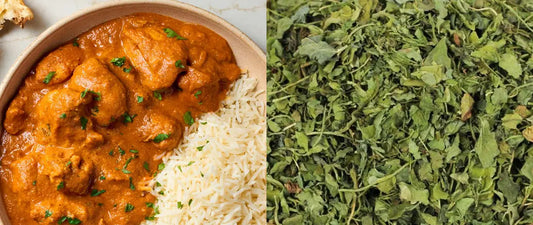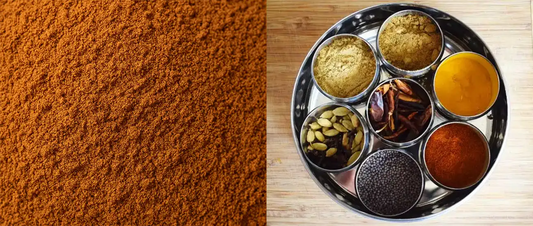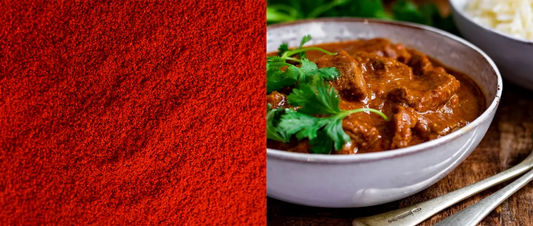How to Make Your Own Garam Masala: Easy Guide
Garam masala, literally meaning "warm spice blend," is the crown jewel of Indian cuisine. While every Indian household has its own cherished recipe, understanding the basics of making this iconic blend can transform your cooking. Whether you're an experienced cook or just starting Indian cuisine, this guide will help you create authentic garam masala, right at home.
Understanding Garam Masala
The term "garam" refers to the heating properties of spices in Ayurvedic tradition. This doesn't necessarily mean spicy-hot, but rather their ability to warm the body's metabolism. Traditional garam masala combines spices that not only enhance flavour but also aid digestion and provide many health benefits.
Essential Ingredients
Garam masala is known for its flexible use of ingredients, but here's a classic North Indian recipe to start with (makes about 1/2 cup):
- 3 tablespoons coriander seeds (dhania)
- 2 tablespoons cumin seeds (jeera)
- 2-inch cinnamon stick (dalchini)
- 8-10 green cardamom pods (choti elaichi)
- 2-3 black cardamom pods (badi elaichi)
- 1 tablespoon black peppercorns (kali mirch)
- 8-10 cloves (laung)
- 2 bay leaves (tej patta)
- 1/4 nutmeg (jaiphal)
- 1 star anise (chakra phool)
- 1 teaspoon fennel seeds (saunf)
Equipment Needed
Before you begin, gather these tools:
- A heavy-bottom pan or skillet for roasting
- A dedicated spice grinder or mortar and pestle
- A fine-mesh sieve
- Airtight glass container for storage
- Measuring spoons
Instructions
1. Preparation: Quality ingredients make a superior blend. When selecting spices:
- Choose whole spices over pre-ground options
- Look for bright, consistent colour
- Check for a strong aroma
- Avoid spices with signs of moisture
- Heat Control: Use a heavy-bottom pan on medium-low heat
- Never rush the process with high-heat
- Roast spices separately based on size and density
- Roasting Order: Start with larger spices (cinnamon, cardamom)
- Add medium-sized spices (coriander, cumin)
- Finish with smaller spices (cloves, peppercorns)
- Visual and Aromatic Cues: Spices should darken slightly
- A rich, complex aroma will develop
- You'll hear light crackling sounds
- Spices will become brittle to touch
Important: Never leave roasting spices unattended. They can burn quickly and become bitter.
3. Cooling and Grinding- Cooling: Spread roasted spices on a plate
- Allow to cool completely (15-20 minutes)
- Separate larger spices for easier grinding
- Grinding: Work in small batches for consistent texture
- Pulse rather than continuous grinding
- Sift between grindings if needed
- Aim for a fine powder
Regional Variations
Garam masala varies across different regions in India, each version telling its own cultural story. In North India, particularly Punjab and Delhi, the blend emphasises warming spices with higher proportions of cinnamon and cardamom, typically added at the end of cooking to preserve its aromatic qualities. Meanwhile, South Indian variations, especially from Kerala, tend to feature more coriander and cumin, often incorporating curry leaves into the blend, and are generally added during the cooking process to allow the flavours to develop with the dish.
The Bengali version of garam masala offers another distinct profile, setting itself apart with generous use of fennel and the inclusion of nutmeg and mace, resulting in a lighter-coloured blend that perfectly complements the region's subtle and sophisticated cuisine. These regional differences highlight how garam masala has evolved to suit local tastes and cooking styles, with each variation perfectly complementing the traditional dishes of its region.
Storage and Shelf Life
Proper storage is crucial for maintaining freshness:
- Container Selection: Use dark glass containers
- Ensure airtight sealing
- Keep away from direct sunlight
- Environmental Conditions: Store in a cool, dry place
- Avoid areas near the stove
- Keep away from moisture
- Duration: Best used within 3 months
- Maximum shelf life of 6 months
- Replace if aroma diminishes
Read more: How to Store Indian Spices: 7 Simple Tips
Common FAQs
Q: Can I skip certain ingredients? Yes, but maintain the balance of warm spices. Essential ones are cardamom, cinnamon, cloves, and cumin.
Q: When should I add it to dishes? Traditionally added near the end of cooking to preserve aromatic compounds.
Q: How do I adjust the heat level? Modify the quantity of black pepper. Garam masala isn't meant to be very hot.
Conclusion
While creating your own garam masala requires some initial effort, the result is a fragrant, personalised spice blend that will make your dishes taste so much more delicious.



